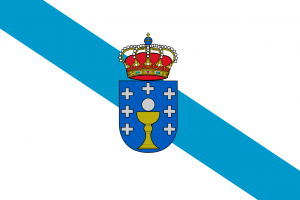Language/Galician/Grammar/Plurals
Hi Galician learners!😊
Learning Galician Grammar can be a challenge, but it's also a lot of fun! In this lesson, we'll be focusing on plurals in Galician.
What are Plurals?
Plurals are words that refer to more than one person, place, or thing. In English, we usually add an -s or -es to the end of a word to make it plural. In Galician, however, there are several different ways to form plurals.
Regular Plurals
The most common way to form plurals in Galician is by adding -s to the end of the word. This is the same as in English. For example:
- casa (house) becomes casas (houses)
- libro (book) becomes libros (books)
Irregular Plurals
Some words in Galician have irregular plurals. These words don't follow the regular pattern of adding -s to the end of the word. For example:
- pai (father) becomes pais (fathers)
- amigo (friend) becomes amigos (friends)
Plural Forms of Nouns Ending in -a
Nouns ending in -a often have two different plural forms. The first form is the regular form, which adds -s to the end of the word. The second form is the feminine form, which adds -s and changes the -a to -as. For example:
- cidade (city) becomes cidades (cities) OR cidades (cities)
- idea (idea) becomes ideas (ideas) OR ideas (ideas)
Plural Forms of Nouns Ending in -o
Nouns ending in -o also often have two different plural forms. The first form is the regular form, which adds -s to the end of the word. The second form is the masculine form, which adds -es and changes the -o to -oes. For example:
- xoguete (toy) becomes xoguetes (toys) OR xoguetes (toys)
- amor (love) becomes amores (loves) OR amores (loves)
Plural Forms of Nouns Ending in -e
Nouns ending in -e also often have two different plural forms. The first form is the regular form, which adds -s to the end of the word. The second form is the masculine form, which adds -es and changes the -e to -es. For example:
- nome (name) becomes nomes (names) OR nomes (names)
- prazer (pleasure) becomes prazers (pleasures) OR prazers (pleasures)
Tips for Learning Plurals
Learning plurals in Galician can be tricky, but here are some tips to help you out:
- Pay attention to the gender of the noun. If the noun is feminine, it will usually have a feminine plural form. If the noun is masculine, it will usually have a masculine plural form.
- Practice using the words in sentences. This will help you remember the correct plural forms.
- Use flashcards to help you memorize the different plural forms.
- Listen to native speakers and try to imitate their pronunciation.
To improve your Galician Grammar, you can also use the Polyglot Club website. Find native speakers and ask them any questions!
If you have any questions, please ask them in the comments section below.
Feel free to edit this wiki page if you think it can be improved. 😎
Related Lessons
- Be Polite
- How to Use Have
- Prepositions
- Definite Articles in Galician
- Adverbs in Galician
- Questions
- Pronouns
- Conditional Mood
- Possessive Case in Galician
- Past Participle in Galician

